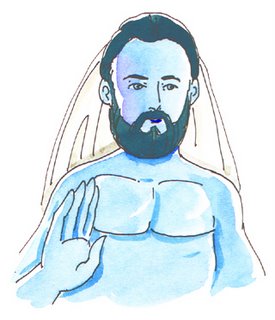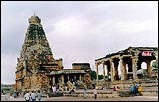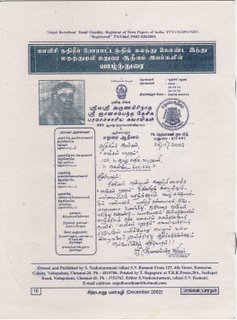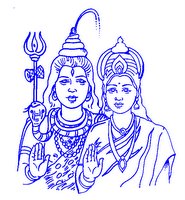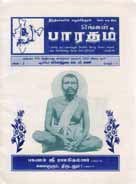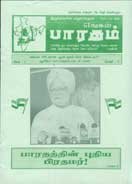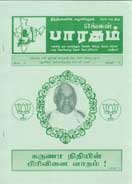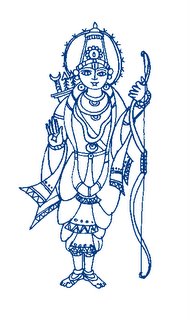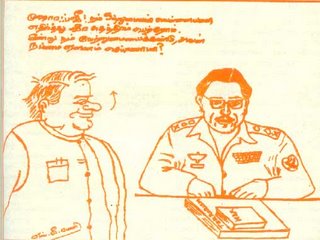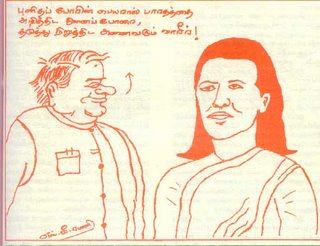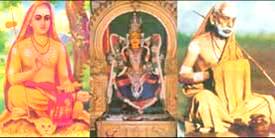
è쾬÷ õ탰Aøõ¡ 裆´I󣇮!
"è쾬÷ õ탰Aøõ¡ 裆´I󣇮" â¡ø ªðKò£K¡ C‰î¬ù‚輈¶‚èœ Þ‰¶‚
è쾬÷ õ탰Aøõ‚° ñ†´ñ™ô, â™ô£‚èì¾÷˜è¬÷»‹ õ탰Aøõ˜èÀ‚è£è¾‹ ªê£™ôŠð†ì¶î£¡. è쾜 Þ™¬ô â¡ø ªðKò£K¡ Cˆî£‰îˆ¬î M÷‚°‹, ªðKò£K¡ C¬ô¬ò ÿóƒèï£îK¡ ÝôòˆFŸ° º¡ù£™ ñ†´‹ ¬õˆî£™ «ð£î£¶, ñÅFèÀ‚°º¡ù£½‹,A¼ˆ¶õ ÝôòƒèÀ‚° º¡ù£½‹ ¬õŠðî¡ Íô‹î£¡ Fó£Mì‚èö舫î£ö˜èÀ‚°ªð¼¬ñ»‹, ¹è¿‹ ãŸð´‹.ÜŠð® ªêŒò Üõ˜èœ º¡ õó«õ‡´‹.
å¼ °PŠH†ì õ°ŠHùK¡ è쾜 ñ†´‹î£¡ Þ™¬ô â¡ø£™, ñŸø ñîˆFùK¡ èì¾œèœ ñ†´‹ Þ¼‚Aø£˜èœ â¡Á ð°ˆîP¾ õ£Fèœ ªê£™ôˆîò£ó£? ñî‹ ñ‚èÀ‚°ˆ«î¬õ Þ™¬ôâ¡ø£™, Þ‰¶ ñî‹ ñ†´‹î£¡ åN‚èŠðì«õ‡´ñ£?
ðˆî£‹ ËŸø£‡´ ºî™ Þ‰Fò£M¡ e¶ ¹Q𣘠'T裈' â¡ø ªðòK™ ð¬ìªò´ˆî
Þvô£Iò˜èœ, Þ‰Fò£M™ àœ÷ ÝJó‚èí‚è£ù Þ‰¶ Ýôòƒè¬÷»‹, ¹ˆî ñìƒè¬÷»‹ Þ®ˆ¶ î¬óñ†ìñ£‚A ܃° ñÅFè¬÷‚膮 ÜèñA›‰î£˜èœ. Þ¡Á õ¬ó ð£Av bMóõ£Fèœ, ü‹º-è£we˜ ð°FèO™ ¹Q𣘠â¡ø «ð£˜¬õJ™, Þ‰¶‚è¬÷»‹ Þ‰¶‚«è£M™è¬÷»‹ °P¬õˆ¶ˆ °î™èœ ï숶A¡øù˜.
݃A«ôò˜è«÷£ ðˆªî£¡ð ËŸø£‡®™ Þ¼‰¶, A¼ˆ¶õŠð£FKò£˜è¬÷ˆ
îƒèœ èO™ Þ¼‰¶ õóõ¬öˆ¶, Þ‰Fò ®™ A¼ˆ¶õ ñîŠHóê£óƒèÀ‚°
«è£®, «è£®ò£è ªêôõNˆ¶, ã²M¡ ¹è¬ö ðóŠHõ¼Aø£˜èœ. ïñ¶ ®™ õ£¿‹
ÜóCò™ õ£Fè«÷£, ð°ˆîP¾õ£î‹ â¡ø ªðòK™ õ°Š¹ õ£îˆ¬î ðóŠH, å¼
°PŠH†ì ñîˆFùK¡ e«î °î™ ï숶õF™ °Pò£è àœ÷ù˜. Þ¶ Gò£ò‹î£ù£?
Þ‰Fò£M¡ ñî «õŸÁ¬ñ¬ò ¬õˆ¶ˆî£«ù, ªõœ¬÷ò˜èÀ‹, Þvô£Iò˜èÀ‹ ïñ¶ ®¡ e¶ ð¬ìªò´ˆ¶ Þ‰Fò˜è¬÷ Ü®¬ñèœ Ý‚Aù£˜èœ.
ªðKò£K¡ ï‡ð˜è÷£è Þó£ü£T Þ¼‰îî¶ ñ†´ñ™ô, ܉î èO™ ðô Hó£ñí˜èO¡
«î˜î™ ªõŸP‚è£è¾‹ ªðKò£˜ Ýîó¾ ÜOˆ¶œ÷£˜ â¡ð¶‹ ܬùõ¼‚°‹ ªîK»‹.
Þ‰Fò M´î¬ôŠ«ð£ó£†ìˆF½‹, îI› Þô‚Aòƒè¬÷ õ÷˜ˆîF½‹ îIöè Hó£ñí˜èÀ‚°ªð¼‹ ðƒ° à‡´ â¡ð¬î Fó£Mì‚èö舫î£ö˜è«÷ ï¡° ÜPõ£˜èœ.
"è쾜 Þ™¬ô" â¡ø ªðKò£K¡ 輈¬î à‡¬ñJ«ô«ò ðóŠð «õ‡´‹ â¡ø â‡í‹ Þ¼‚°‹ Fó£Mì‚èöèˆî¬ôõ˜èœ ê£FªõP¬òˆÉ‡´õF™ â‡í‹ ªè£œ÷£ñ™, ªðKò£K¡ C¬ô¬ò A¼v¶õ ÝôòƒèÀ‚° âFK½‹, Þvô£Iò ñÅFèÀ‚° º¡ù£½‹ ¬õ‚è º¡ õ‰î£™, Üõ˜è¬÷ à‡¬ñò£ù ªðKò£K¡ ªî£‡ì˜èœ â¡Á ñ‚èœ ð£ó£†´õ£˜èœ.
à¼õ õN𣆮¡ e¶ ï‹H‚¬è Þ™ô£î Þvô£Iò˜èœ, ÝŠè£Qvî£ùˆF™ Þ¼‰î
õóô£ŸÁ„CøŠ¹ I‚è ä‰î£‹ ËŸø£‡®™ à¼õ£‚èŠð†ì ¹ó£îùñ£ù 50, 34 e†ì˜ àòóºœ÷ Þó‡´ ¹ˆî˜ C¬ôè¬÷ ªõ®¬õˆ¶ ªï£Á‚Aù£˜èœ. ܬîˆî†®‚«è†è ¹ˆîK¡ õN ïì‚°‹ â‰î ð°ˆîP¾ õ£FèÀ‹ º¡ õóM™¬ô.Þ¡Á âõ«ó£ ªêŒî îõø£ù ªêò™èÀ‚°õL¬ñòŸøŠHKMù¬ó ðNõ£ƒè G¬ù‚A¡øù˜. «è£JL™ Þ¼Šð¶ è쾜 Þ™¬ô ªõÁ‹è™ C¬ô â¡Á õ£F´‹ Þõ˜èœ, ªðKò£¼‚° C¬ô ¬õˆ¶ ñ£¬ô ÜEMˆîî¡ Íô‹, è™L™ è쾬÷»‹ è£íô£‹, ªðKò£¬ó»‹ è£íô£‹ â¡Á õN»‹ 裆® M†ì£˜èœ.
ªðKò£K¡ C¬ô¬ò â™ô£ ñî Ýôòƒèœ º¡¹‹ ¬õ‚è Fó£Mì˜ èöèˆFù˜ º¡ õó«õ‡´‹â¡ð«î ïñ¶ ðEõ£ù «õ‡´«è£œ.
ñJô£´¶¬ø âv.i. óñE.











